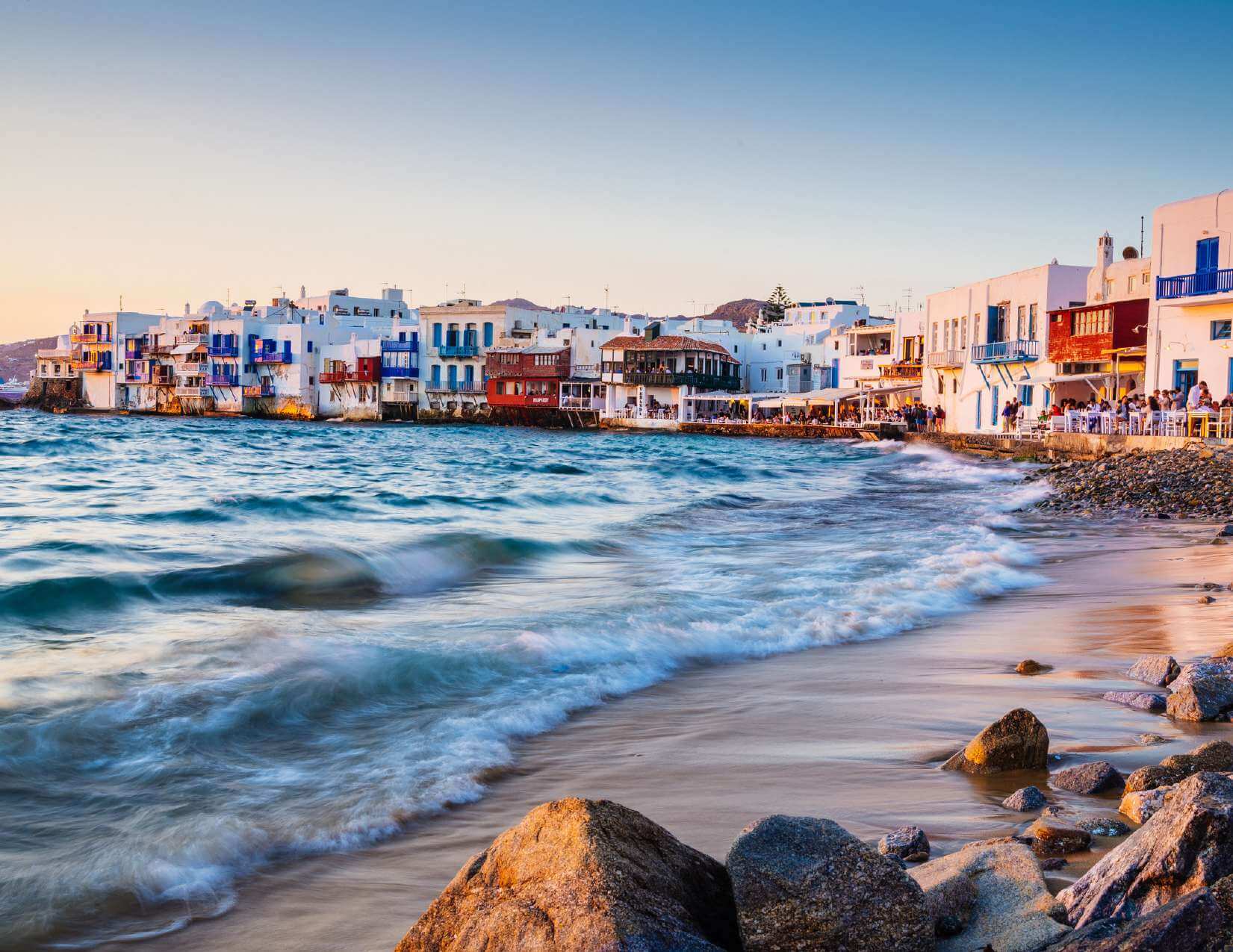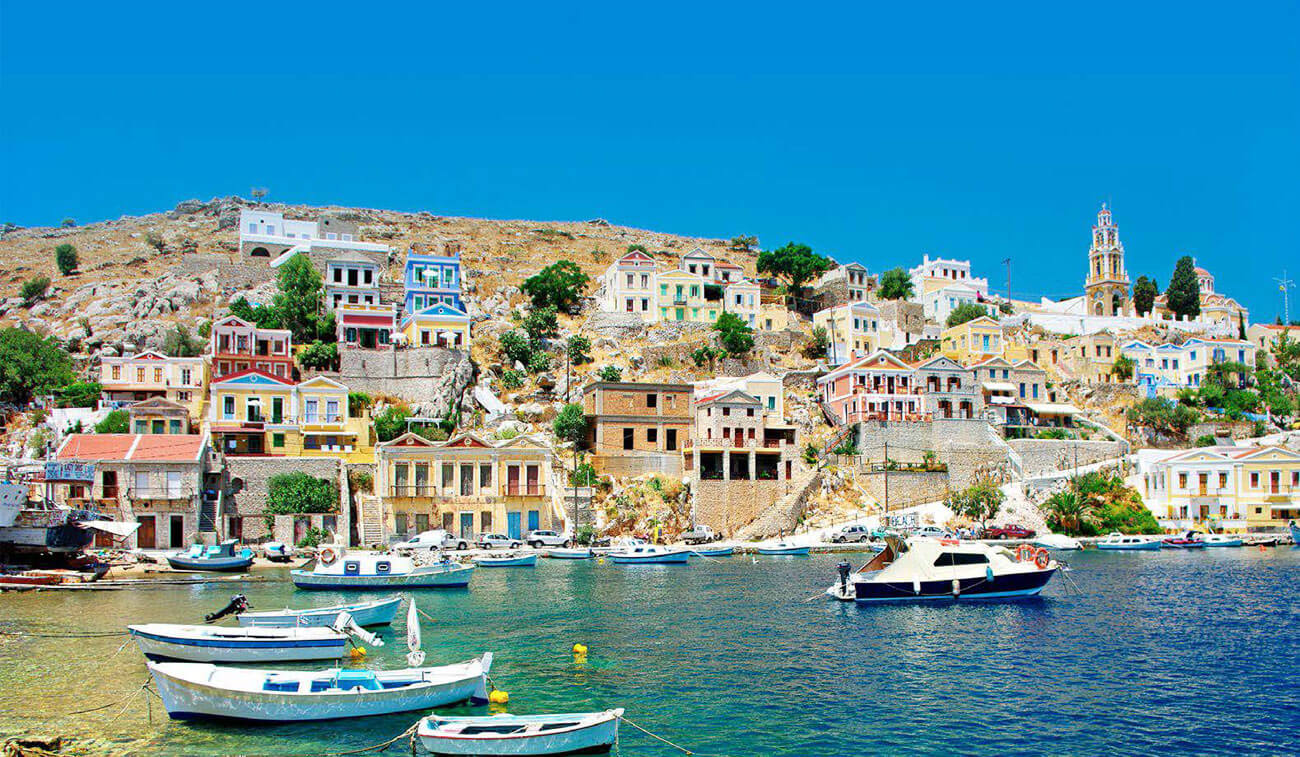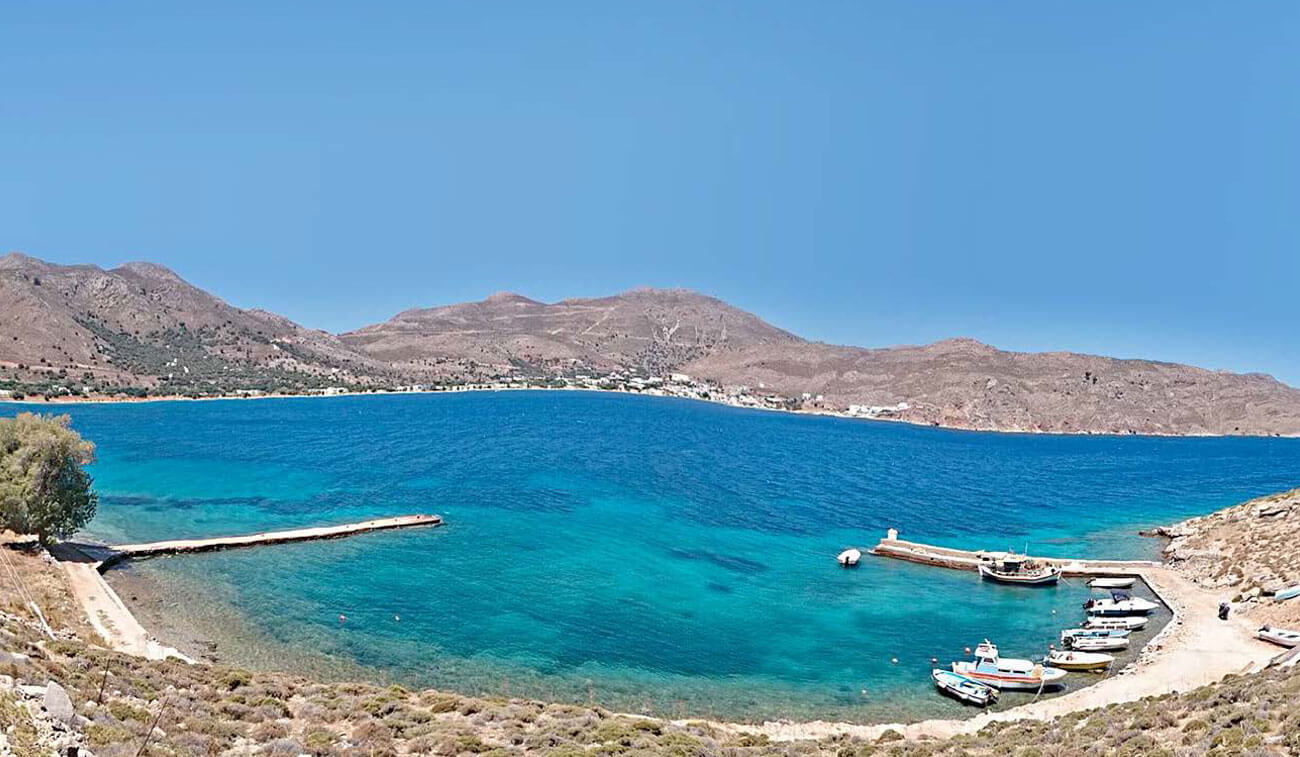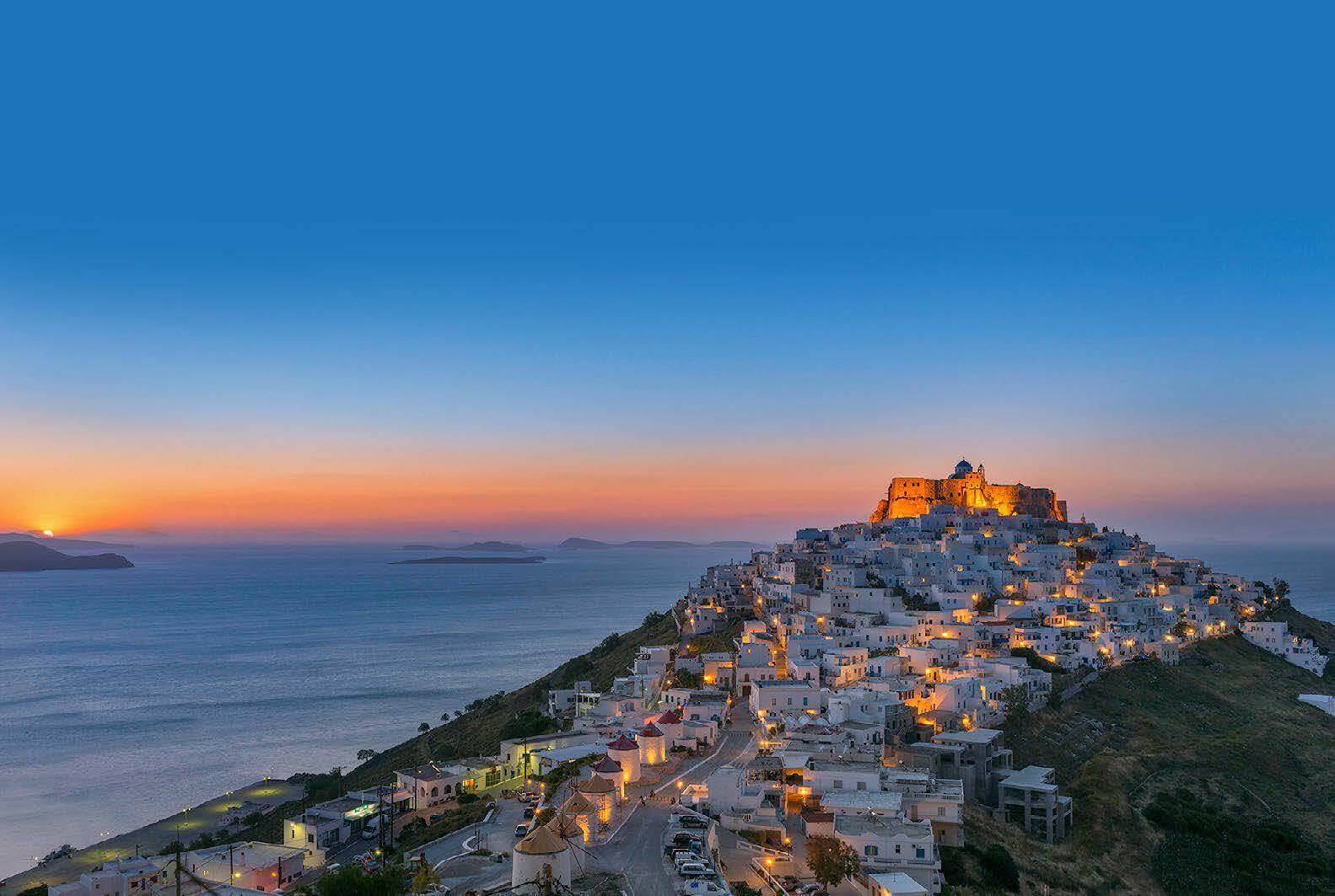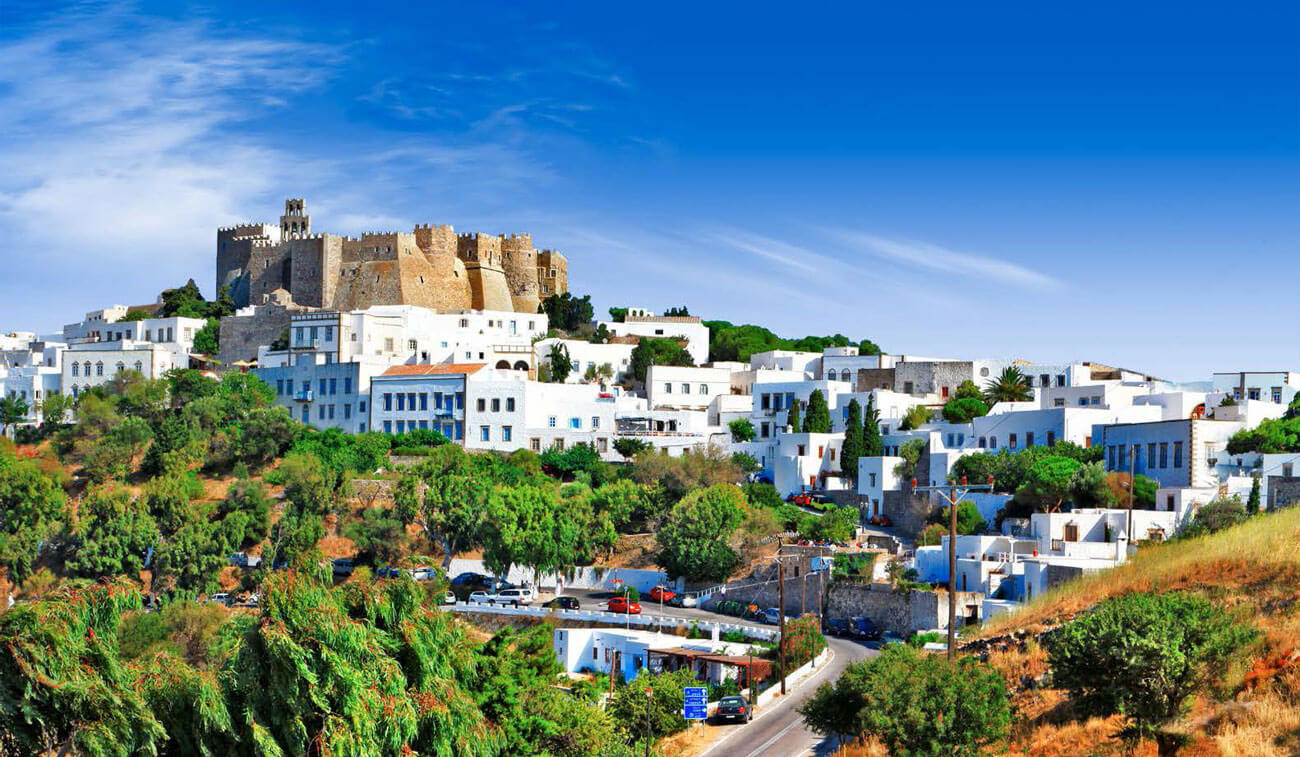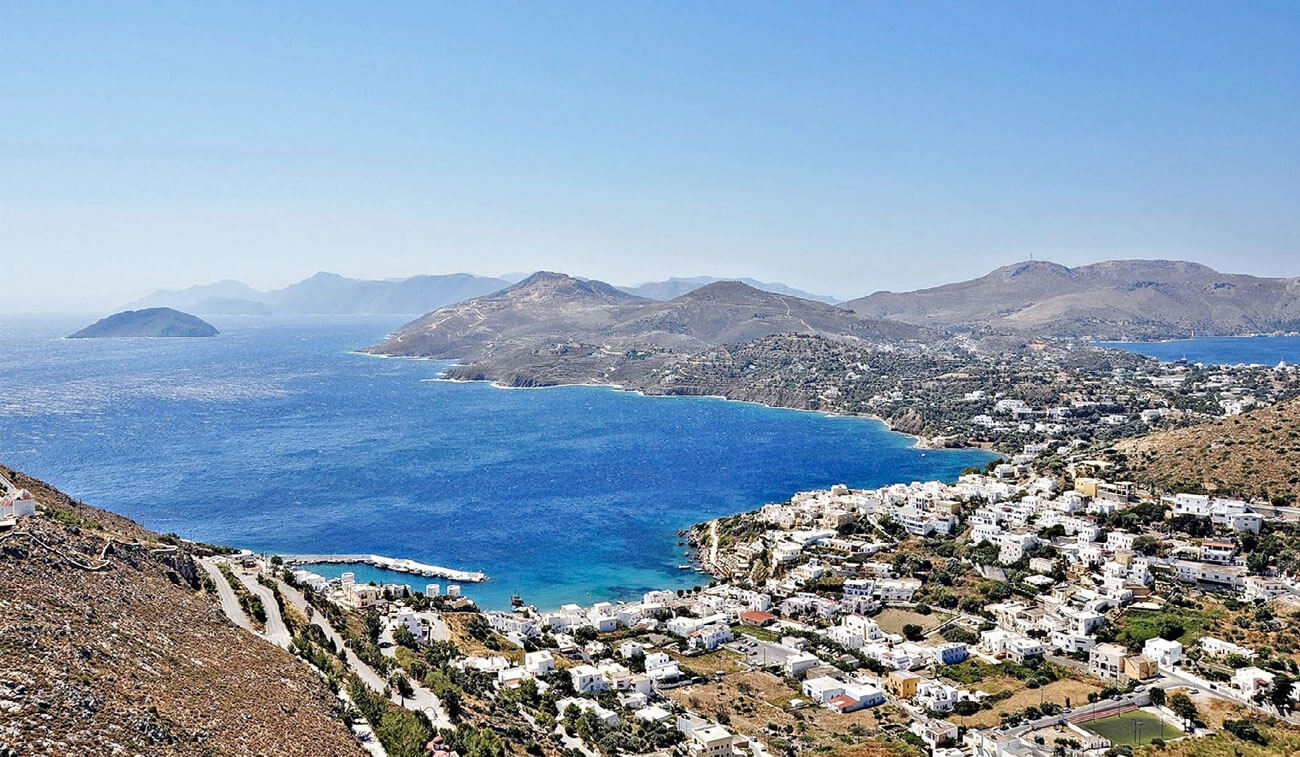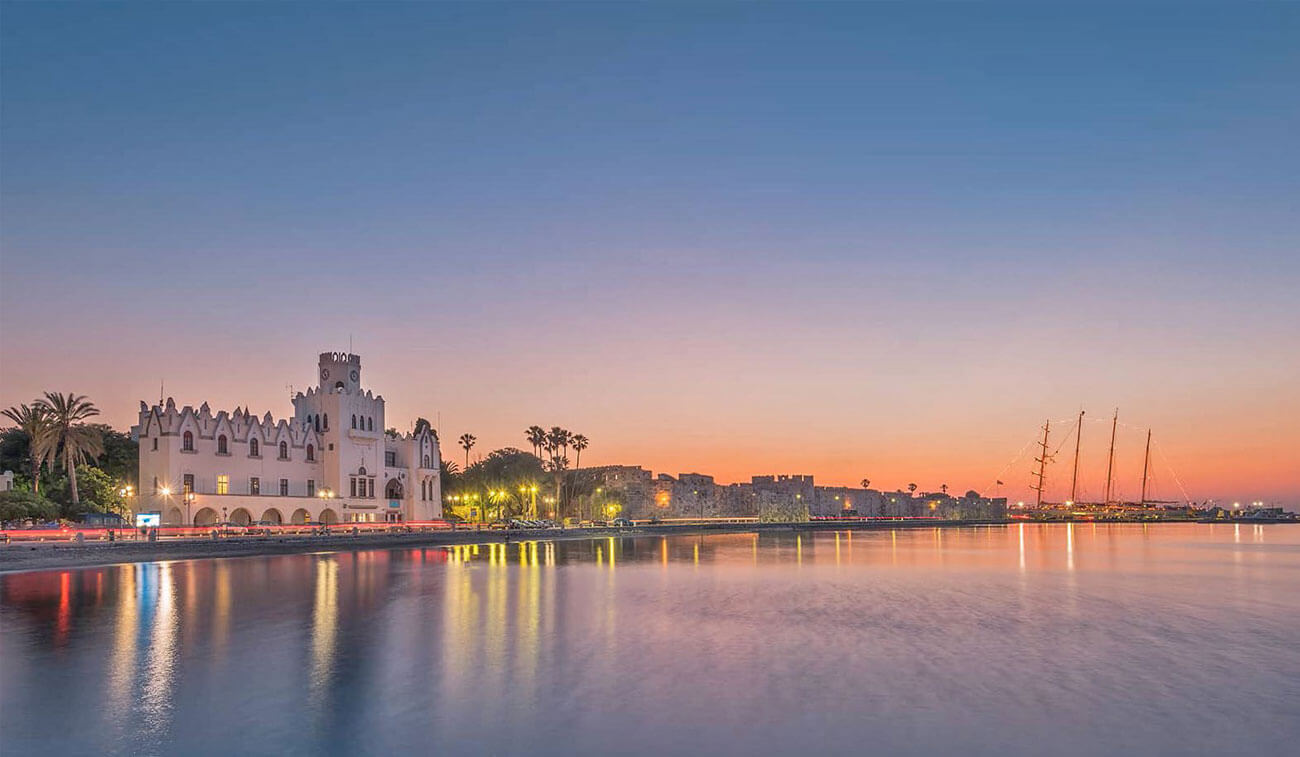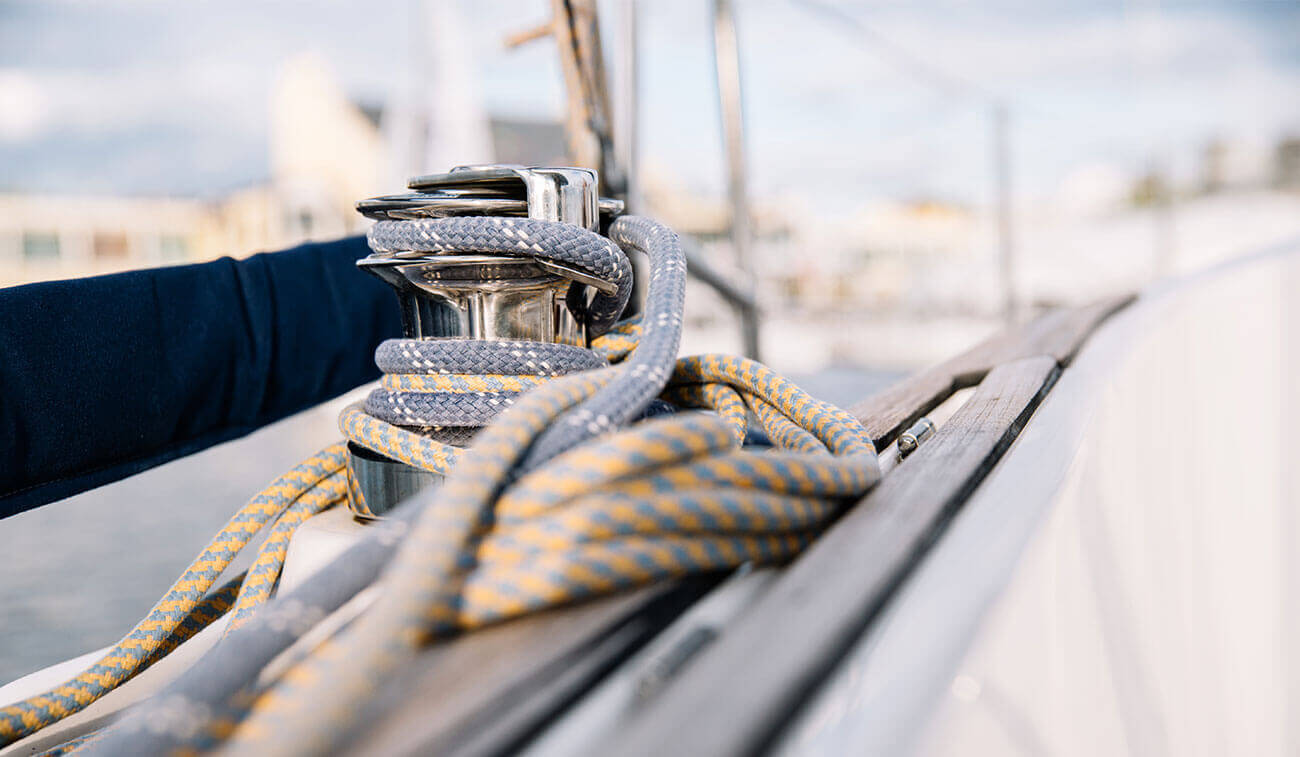MYKONOS ISLAND
Mykonos is a wonderful Cycladic island, worth visiting at any time of the year. However, it is a must to enjoy the days of its summer glory, when it literally becomes an international village, when its community of believers make it a sight worth seeing, when one can experience the unique feeling that everything and everyone is in Mykonos.
According to mythology, Mykonos was formed from the petrified bodies of giants killed by Hercules. And did you know that the island took its name from the grandson of Apollo, “Mykonos”?
Set out on a journey to discover a fascinating world where glamour meets simplicity. On Mykonos celebrities, college students and families mingle together to celebrate the Greek summer. However, despite its cosmopolitan character, Mykonos remains a beautiful and picturesque island, whose all white Chora lies next to the sea, with golden beaches, friendly and smiling people and a continuous link with history lasting for centuries. If you think you've seen someone that looks famous, then you're probably right. In Mykonos you'll sit right next to famous actors, singers, stars, TV personalities, top models.
In Mykonos there are beaches that cater for all tastes: family beaches such as Lia, trendy beaches like Psarou and quiet beaches such as Agios Sostis.
In contrast to other Cycladic capitals, the capital town (Chora) of the island is not built in the shape of an amphitheater but instead spreads out over a wide area. It is one of the best examples of Cycladic architecture and a spellbinding attraction for visitors. Stroll around its narrow marble streets and admire whitewashed houses with colorful doors and window frames, bougainvillea trees in purple bloom and hidden churches.
KEA ISLAND
Due to its proximity to Athens, Kea (also called “Tzia”) is an easily accessible beauty with a scenery variety: steep mountains, small fields, olive groves, vineyards, valleys, picturesque coves, exciting hiking trails and off-the-beaten-track beaches. On the island with the largest oak forest in the Cyclades birdwatching is a real delight. For those who are into geology, there are plenty of small caves (like in Kálamos and in Áyios Timótheos). 36 km long cobbled trails will lead you to the four city-states of the ancient times: Ioulis, Karthaia, Koressia, Poiessa).
Situated in the centre of the island, at the site of the ancient citystate by the same name, the capital of Kea, Ioulis, is a very picturesque town with ceramic-tile roofed houses, cobbled streets, arched passages, steps and squares. The island was named after Ceos, a hero from Nafpaktos who settled on the island in the 12th century BC. The island was later named Tzia during the Venetian occupation. Kea played an important role in the flourishing of the Cycladic civilization and was homeland to great figures of ancient Greece, such as the poet Simonides.
For hikers, Kea is a paradise. Paths with a total length of 36 kilometres, 65% of which are stone-paved, cross dreamy routes through dense forests of tall oaks and lead to beautiful isolated beaches.
SYMI ISLAND
While approaching the port of Symi, one has the overwhelming feeling of entering a perfectly painted image of a scenic traditional village. As a rule, people remain agape and cannot take their eyes off the spectacular sight. The few who can resist the superb spectacle of the town of Symi stretching its impeccable architecture on the slopes of the surrounding hills, take off their eyes to look at their book guides.
TILOS ISLAND
The ragged, mountainous terrain of Tilos, its densely forested ranges, its hilly vistas, and its verdant valleys, are home to four hundred species of flowers and herbs and the habitat of rare species of birds such as Bonelli’s eagles, hawks, nightingales, goldfinches, herons and bee-eaters.
ASTYPALAIA ISLAND
Located exactly where the Dodecanese meet the Cyclades, the island of Astypalaia boasts a centuries-old history, whitewashed villages and sun-drenched beaches. Embark on a fascinating trip where the deep blue of the sea meets the bright white coloursof beautiful island houses. Despite its small size, Astypaleafeatures numerous bays and coves, a remarkable coastline of principally secluded, difficult to access but absolutely rewarding beaches, plus a few organized ones. The island remains faithful to high quality aesthetics, regarding its moderate touristic infrastructure, traditional settlements, as well as the eating, shopping and lounge nightlife hang-outs.
PATMOS ISLAND
Worldwide known as a sacred island for it is the place where Saint John wrote the Book of Revelation, Patmos is an ideal destination for nature lovers thanks to its lace-like coastline, sheer cliffs and volcanic soil.
LEROS ISLAND
According to mythology, this is the island of Artemis (Diana), the goddess of forests and hunting. It is ideal for peaceful vacation, while you will be amazed by its impressive architecture, clean coasts and the imposing castle of Panaghia, on Apitiki hill. The picture is completed with the hidden bays, hills, pine-trees forests, olive groves, and the law plain areas full of water springs.
KALYMNOS ISLAND
Climbing up giant vertical rocks; diving in a sea bottom where centuries-old ship wrecks lie; enchanting caves; wonderful beaches und picturesque island settlements. This is Kalymnos: a destination offering more than you can imagine! Welcome to Kalymnos, the fourth largest island of the Dodecanese Group is widely known as an international sponge-harvesting trade center.
KOS ISLAND
Endless beaches with turquoise waters, lush vegetation and abundantly flowing streams, ancient and medieval monuments, grand edifices of Italian architecture all come to spell one word: Kos, the third largest island of the Dodecanese Group, only 4 miles away from the coast of Turkey. Kos is the island that gave the world Hippocrates, the father of medicine.
Boat Rental
Boat Rentals!” Embark on an aquatic escapade with our premier boat rental service! 🚤 Whether you’re a seasoned sailor or a first-time explorer, our fleet of top-notch boats promises an unforgettable journey on the open waters. Discover the freedom of the sea as you chart your course through pristine lakes, meandering rivers, or coastal wonders. […]


